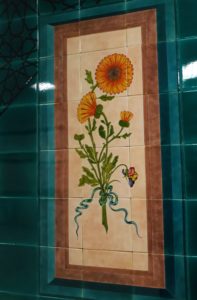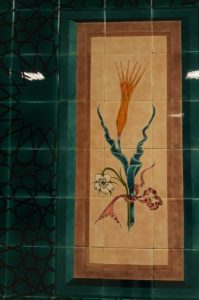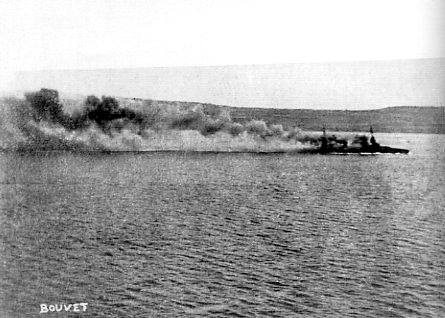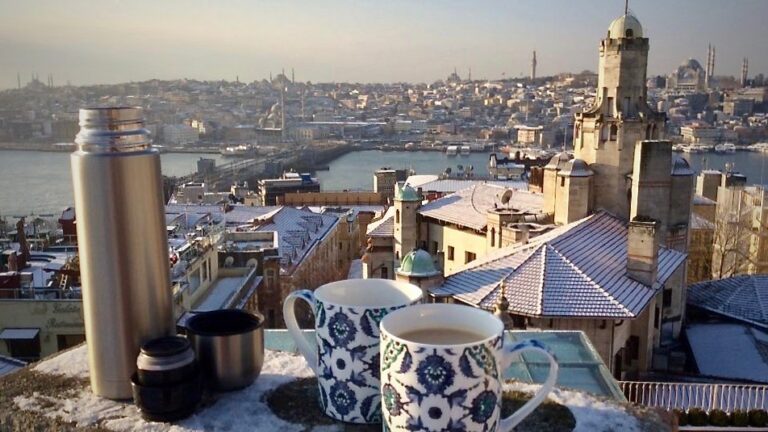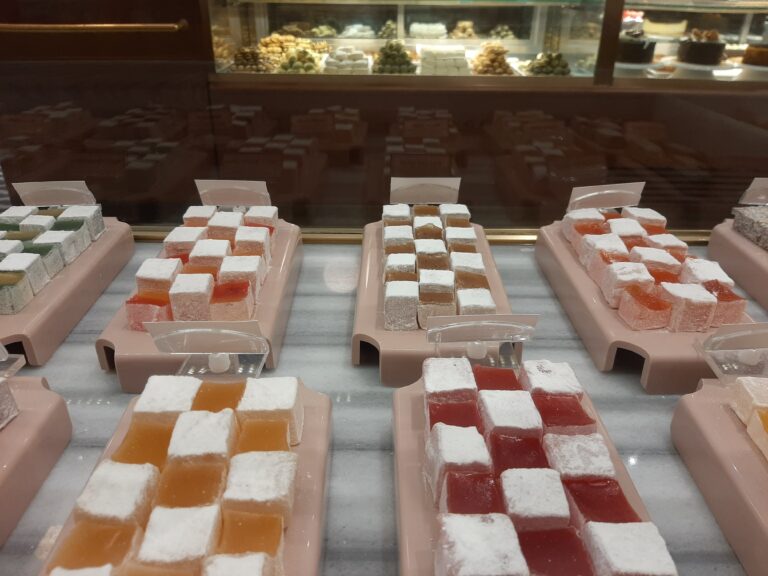Ali Uskudari – subway artist and palace master
Istanbul always rewards you if you take the time to stop and look around. So it was that on an outing in Istanbul to research another article when I discovered Ali Uskudari’s work. I wasn’t in a museum. The photos accompanying this post are reproductions of his work in tile, on the walls of Bağlarbaşı metro station.
Ali Uskudari was an 18th century book illuminator and master of lacquer art, and as his name suggests, he was originally from Üsküdar on the Asian side of Istanbul. While the exact dates of his birth and death aren’t recorded, his work is. He was a specialist in painting flowers at a time when Ottoman artists were taking inspiration from Baroque and Rococo styles.
He was one of a long line of talented artists who came to work in Topkapı Palace in the nakkaşhane. Nakkaş means miniaturist and one of the most famous of these was Şahkulu. Şahkulu was a Baghdad painter exiled from Tabriz to Amasya in northern Turkey in 1514. He then came to work in Topkapı Palace between 1520 and 1526. During that time he introduced many new motifs to Ottoman art and artists. Şahkulu’s most notable student was an individual called Kara Mehmed Çelebi, or Kara Memi for short. He was a famous illustrator from the 16th century whose work can be seen in the tiles adorning Topkapı Palace today. His most famous contributions are for flower styles using roses, tulips, hyacinths and carnations. At a time when botanical science and drafting were transforming art in Europe, Kara Memi developed a more naturalist perspective to textile and ceramic design, separate from the more stylised design of the miniaturists.
Ali Uskudari benefited from the heritage left by all these great masters, but is best known for his developments in the direction taken by Kara Memi. In his delicate, lively floral works Uskudari illustrates a genre of his own creation known as şufuke. Şufuke illustrations feature flowers, often in miniature, and are a blend of botanical expertise and artistic beauty.
Examples of Uskudari’s art work dating from 1723 to 1761 can be found in the Topkapı Palace Museum, the Turkish and Islamic Works Museum and the Istanbul University Library. His legacy includes laquered skin book covers in writing pads and other illuminations, in particular the Mecbua-i Gazelliyat, a folder containing 30 different illustrations of flowers and varying interpretations.
If you want to discover more of the everyday extraordinary of life in modern Istanbul, follow me via this blog as well as on Instagram and Facebook.
